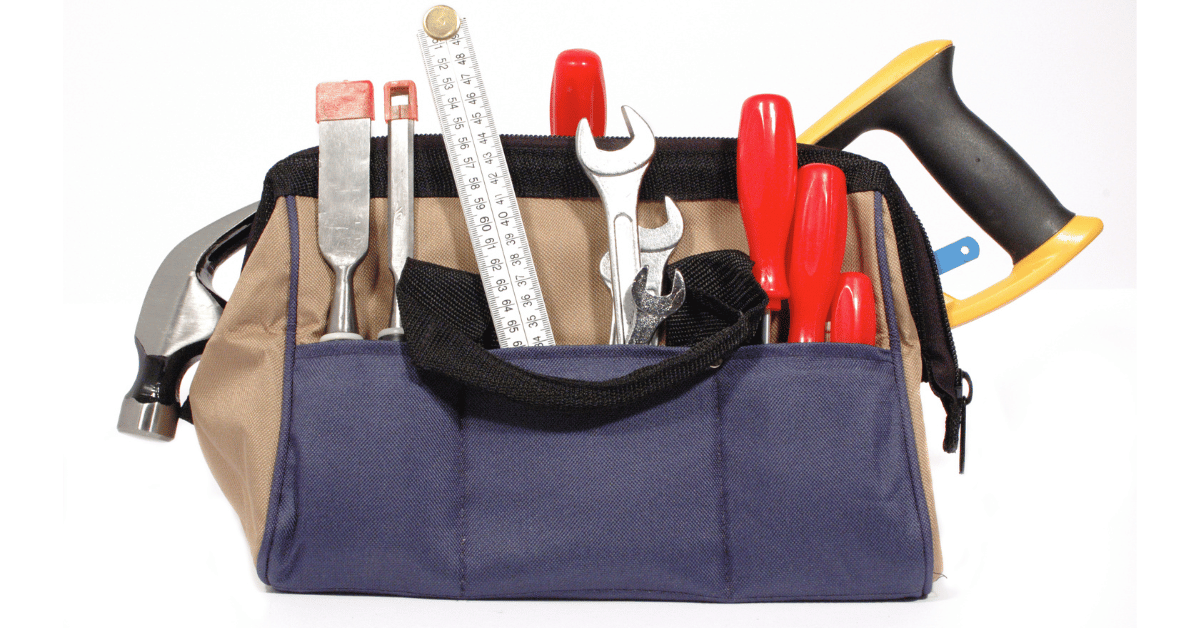Drywall Tool Bag Essentials: Top Picks for Professionals
As professional drywall installers and DIY enthusiasts, we understand the importance of having the right tools when working on a project. A well-organized drywall tool bag makes our job easier and saves us valuable time on the job site.
There are numerous factors to consider when choosing the perfect drywall tools bag, such as size, durability, and functionality. This article will provide an overview of the essential features that make a drywall tool bag indispensable.
Types of Drywall Tool Bags
This section will discuss the various types of drywall tool bags available in the market. These bags come in different styles and sizes, catering to the needs of professionals and DIY enthusiasts alike.
Pouches
Drywall pouches are small bags designed to hold a limited number of tools. They attach to your belt for easy access while working. These pouches are ideal for smaller jobs, where you only need a few essential tools.
- Lightweight and easy to move around
- Perfect for drywall repair tasks
- Available in various sizes and materials
Tool Belts
A tool belt is an essential accessory for drywall professionals, allowing them to always carry their tools with them. Tool belts come in various materials, such as leather, nylon, or canvas, and provide multiple pouches for efficiently organizing your tools.
Material Durability Care
Leather High Requires regular conditioning
Nylon Medium Easy to clean
Canvas Low Machine washable
Backpacks
Backpack-style drywall tool bags offer a more comfortable carrying option for transporting many tools to and from job sites. These bags usually have multiple compartments and pockets to help you stay organized.
Some key features to look for in a backpack-style tool bag include:
- Padded shoulder straps for added comfort
- Reinforced stitching for durability
- Exterior pockets for easy access to frequently used tools
Essential Tools for Drywall Work
When working with drywall, having the right tools to achieve professional results is essential. This section discusses the main categories of drywall tools and their specific uses.
Measuring and Marking Tools
Accurate measurements and marking are crucial for precise drywall installation. Some essential measuring and marking tools include:
- Tape measure: for taking accurate measurements
- Carpenter’s square: for ensuring straight cuts and right angles
- Chalk line: for marking long, straight lines on drywall
- Pencils or drywall markers: for marking measurements and cutlines
Cutting Tools
The drywall must be cut to the appropriate size and shape to ensure proper installation. Some commonly used cutting tools for this purpose are:
- Utility knife: for scoring and cutting drywall
- Handsaw or keyhole saw: for cutting small openings or making curved cuts
- Circle cutter: for creating round openings in drywall panels
- T-square: for guiding straight cuts and ensuring accuracy
Installation Tools
Once the drywall is measured and cut, it needs to be installed. Essential installation tools include:
- Drywall screws or nails: for securing drywall panels to wall studs
- Screw gun or hammer: for driving screws or nails into drywall
- Drywall lift: for lifting and positioning large panels onto ceilings or high walls
- Levels: for ensuring that the installed drywall is straight and even
Finishing Tools
After installation, the drywall must be finished to achieve a smooth, seamless appearance. Essential finishing tools are:
- Joint compound: for filling gaps between drywall panels
- Putty knife or taping knife: for applying joint compound and smoothing seams
- Drywall sanding tools: for smoothing the surface of the joint compound
- Paper or mesh drywall tape: for reinforcing seams and preventing cracks
Materials and Durability
When selecting a drywall tool bag, one of the primary factors to consider is its material, as this affects both its functionality and longevity. This section will discuss the most common materials used to construct tool bags: canvas, nylon, and leather.
Canvas
Canvas tool bags are popular due to their affordability and durability. They are characterized by their firm, tightly woven fabric that can resist abrasion and tearing. Canvas bags tend to be lighter, which can be advantageous when carrying many tools.
- Pros: Affordable, durable, lightweight
- Cons: Less water-resistant, can be prone to staining
Nylon
Nylon is another common material used for drywall tool bags. It is a synthetic fabric known for its strength and resistance to abrasion, making it a solid choice for durability. Nylon bags are also relatively lightweight and tend to be more resistant to water and stains than their canvas counterparts.
- Pros: Durable, resistant to water and stains, lightweight
- Cons: Can be less breathable, may be more expensive
Leather
Professionals and enthusiasts highly seek leather tool bags offering durability, comfort, and aesthetic appeal. The natural material is strong, resistant to wear and tear, and can develop a unique patina. However, leather bags tend to be heavier and more expensive than canvas and nylon.
- Pros: Highly durable, comfortable, aesthetically appealing
- Cons: Heavier, more expensive, requires additional care
Each material has its advantages and drawbacks, so evaluating your specific needs and preferences is essential when selecting a drywall tool bag. Consider factors such as weight, price, and resistance to damage to decide on the best bag for you.
Organization and Storage Options
This section will explore various organization and storage options available in drywall tool bags. These features are essential for a well-functioning tool bag that helps you stay organized on the job site.
Pockets and Compartments
When it comes to pockets and compartments, the more, the better. Multiple pockets allow us to organize our tools efficiently, making them easily accessible when needed. Look for bags of various sizes and pockets, including large compartments for more extensive tools and smaller ones for nails, screws, and accessories.
Tool Loops
Tool loops are a great addition to any drywall tool bag. They provide secure storage for longer tools like levels and trowels, ensuring they are always within reach. Many bags offer a combination of inner and outer loops for versatile storage solutions.
Zippered Pockets
Zippered pockets add an extra layer of security for our valuable tools and accessories. They prevent items from falling out or getting lost, especially when we’re moving around on the job site. Some bags even feature lockable zippers for increased security.
Additional Storage Features
Besides the standard pockets and compartments, there are several other storage options worth considering:
- Tape measure clip: Allows easy access to our tape measure and prevents it from getting lost in the bag.
- Hammer holder: Securely holds our hammer, keeping it within reach and avoiding damage to other tools.
- Detachable parts bins: Ideal for storing small items like screws and nails, allowing for easy organization and access.
Considering these organization and storage features, we can select the perfect drywall tool bag that meets our needs and ensures a smooth workflow on the job site.
Comfort and Ergonomics
Comfort and ergonomics are essential when choosing a drywall tool bag. A comfortable and user-friendly tool bag can significantly impact productivity and reduce the chances of developing physical discomfort or injuries. This section will discuss Straps and Padding, Adjustability, and Weight Distribution.
Straps and Padding
The straps and padding in a drywall tool bag significantly impact comfort. The ideal straps should be adjustable, wide, and well-padded to distribute weight evenly across the shoulders and minimize strain. A well-padded back panel can also provide extra support and protection against sharp tools. A quality drywall tool bag should offer the following:
- Adjustable shoulder straps
- Wide, padded straps for even weight distribution
- A padded back panel for comfort and protection
Adjustability
Adjustability is another critical factor in the comfort of a drywall tool bag. We recommend looking for a bag with adjustable straps and compartments, allowing you to customize the fit and organization according to your preferences and body type. The benefits of having an adjustable drywall tool bag include the following:
- Personalized fit for maximum comfort
- Efficient organization of tools
- Reduced risk of accidental tool damage
Weight Distribution
Proper weight distribution is essential for minimizing strain and preventing injury while wearing a drywall tool bag. A well-designed bag will evenly distribute heavy tools across the body, preventing muscle imbalances and fatigue. To ensure optimal weight distribution, we recommend looking for features such as:
- An ergonomic, balanced design
- Evenly-spaced compartments for tools
- A waist belt to distribute weight across the hips
Popular Brands and Their Offerings
Drywall tool bags come in various styles, sizes, and materials to suit the needs of professionals and DIY enthusiasts. In this section, we will discuss some famous brands and their offerings.
DEWALT
DEWALT is a well-known brand in the construction industry with a reputation for producing high-quality and durable tools. Their drywall tool bag offerings are no exception. Some features of DEWALT drywall tool bags include:
- Heavy-duty construction for long-lasting durability
- Multiple compartments and pockets for organization
- Padded shoulder strap for comfort
CLC
Custom LeatherCraft (CLC) is another reputable brand in the tool storage market. They offer a variety of drywall tool bags designed for convenience and organization. Some key features of CLC drywall tool bags include:
- High-quality leather and fabric materials for durability
- Adjustable, padded shoulder straps for comfort
- Ample storage space with multiple compartments and pockets
Husky
Husky is a famous brand for making affordable yet reliable tool storage solutions. Their drywall tool bags cater to budget-conscious customers without compromising on quality. Features of Husky drywall tool bags include:
- Sturdy construction for durability
- Multiple pockets for organization
- Comfortable, adjustable shoulder straps
Occidental Leather
Occidental Leather is a premium brand specializing in high-quality leather tool storage solutions. Their drywall tool bags are an excellent choice for professionals who require a stylish and long-lasting tool storage option. Features of Occidental Leather drywall tool bags include:
- Handcrafted, top-grain leather construction for durability and style
- Ample storage space with multiple compartments and pockets
- Comfortable, padded shoulder straps
Each brand offers different features and benefits in its drywall tool bag designs. Consider your specific needs, budget, and preferences when selecting the ideal drywall tool bag.
Price and Budget Considerations
When looking for a drywall tool bag, it’s essential to consider your budget and the price of various options on the market. While some bags seem more expensive up front, they could save you money in the long run because they are made of more durable materials and designed for maximum organization and efficiency.
There’s a wide price range for drywall tool bags, starting from as low as $30 for basic models to higher-end options that can exceed $150. We recommend setting a budget based on your needs and priorities as a professional drywaller or DIY enthusiast.
To help you decide, let’s compare some features and their corresponding price ranges:
Feature Price Range
Material $30 – $150+
Number of Pockets $30 – $100+
Specialized Compartments $50 – $150+
Comfort and Ergonomics $40 – $150+
Warranty and Brand Reputation $50 – $150+
In conclusion, consider your budget, the bag’s material, the number of pockets and specialized compartments, comfort and ergonomics, and the warranty and brand reputation. As you can see, bags are available in various price ranges and with different features. This information helps you decide when purchasing the best drywall tool bag.

